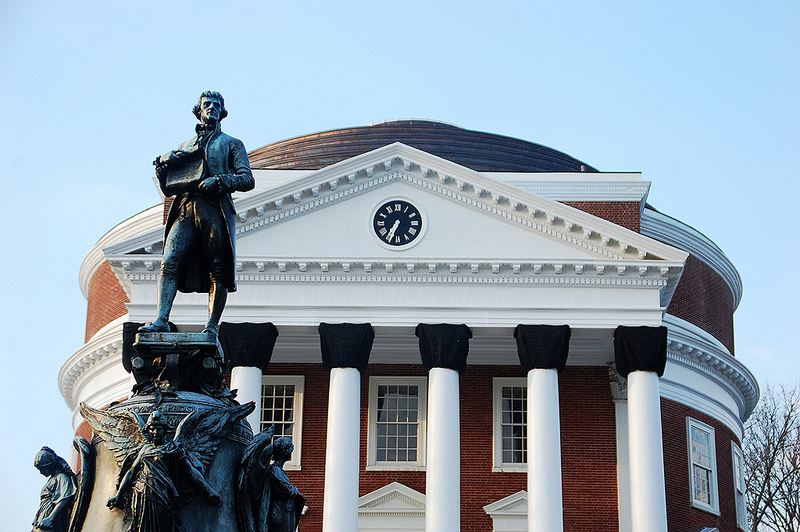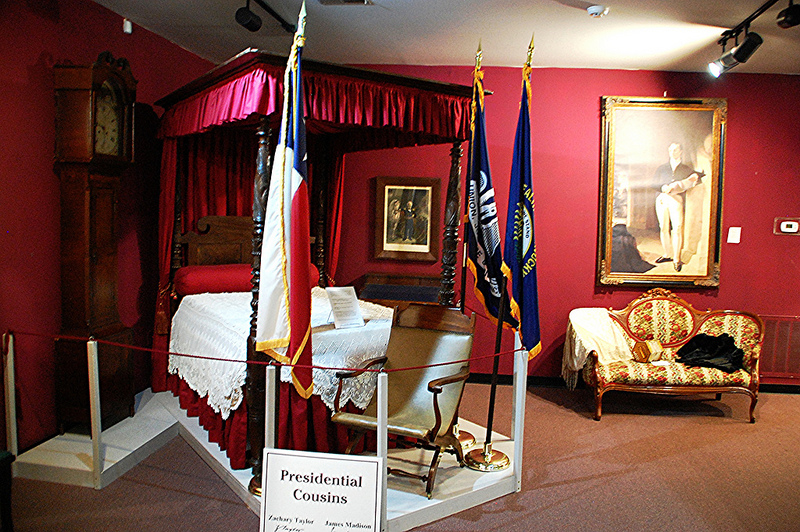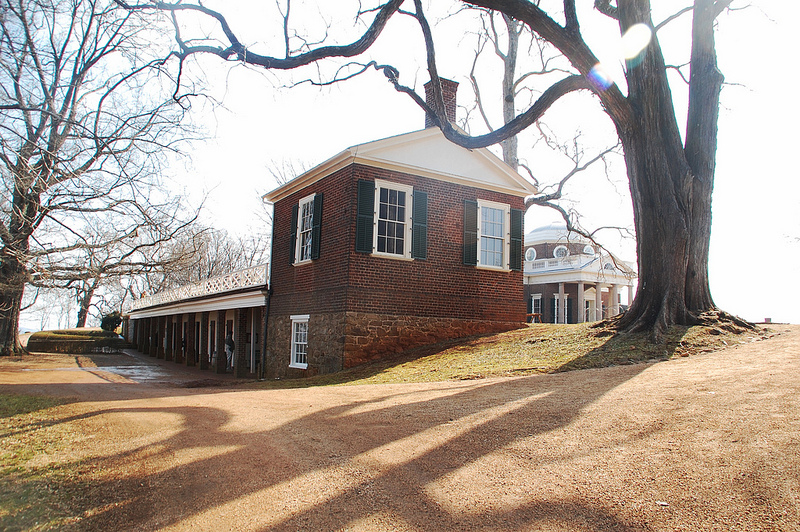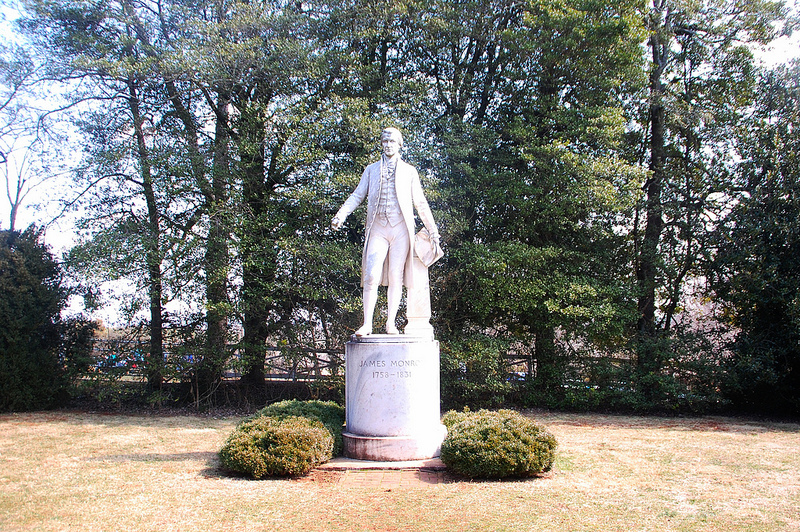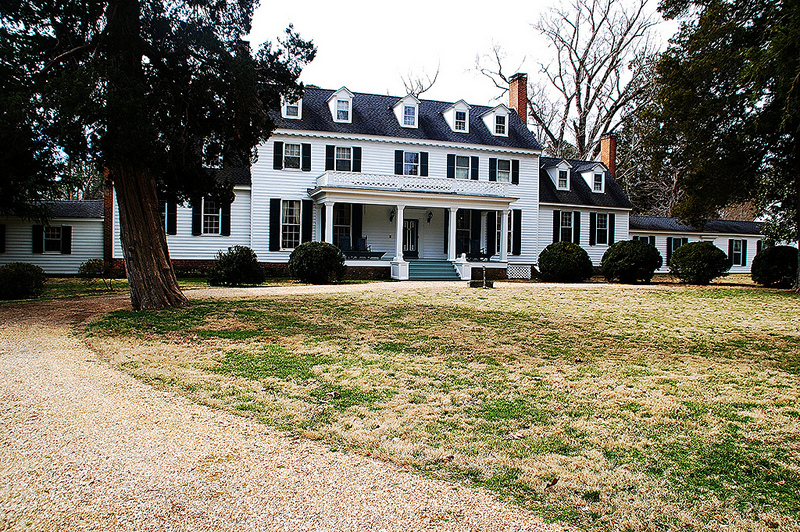This latest trip on my presidential gravesite quest was odd… because it wasn’t odd at all. Planes flew out on time, rental car was surprisingly spacious for the economy class, weather was great, everything went as planned. Ok, a restaurant I was going to visit was having an unannounced private function and I had to find a different place. But otherwise it couldn’t have gone better.
Part of this was because I was retracing my steps – Sonya and I visited this part of Virginia about four years ago. We were in town for a wedding but decided to make a trip out of it and visiting some of the sites I saw this week. This saves time on the road, because you know what to look for.
But there were some pleasant surprises even in the places I’d already been. When I last visited James Madison’s house, Montpelier, the research teams had just confirmed that cabins for some of the plantation’s enslaved community were just off to one side of the main house. They had signs up nearby, but that was it. Now, they have wood frame structures in place to show what these cabins would have looked like. An exciting development, albeit on a depressing subject.
There were big changes in the interior of the house as well, though you’ll have to take my word for it as photography isn’t allowed inside. There are lots of new artifacts and period pieces in the rooms. And, best of all, there are lots of new visitors – or at least there were when I visited.
Montpelier is in Orange, Virginia, a pretty and rural town about an hour and a half north of Richmond full of horse farms and small-scale wine operations. The James Madison Museum, separate from Montpelier, combines the historical and agricultural. It puts Madison in the context of Orange County and its farming heritage. And it has some surprises, too: James Madison is related to Zachary Taylor, so the museum has a few artifacts from Old Rough and Ready’s presidency.
The bed belongs to one of Taylor’s relatives, if I remember right, while the grandfather clock and the desk were in Taylor’s White House.
Of Thomas Jefferson’s Monticello, I can only speak to the beauty of the scenery, the fascinating design of the house, and the many interesting items and artifacts contained therein. Our tour guide, Michael, pointed out several technically, albeit not morally, impressive elements that were designed to conceal some of the activity of the enslaved people on the plantation, from hidden dumbwaiters in the dining room to the outside walkways built on top of basically all the domestic slave workspaces – kitchens, laundry facilities, and so forth. Monticello is built into a hillside, so without looking carefully you might think you’re just walking on a patio and not on top of the busiest parts of the property.
Jefferson and Madison (or, perhaps more accurately, the people they enslaved) built up these huge, ornate houses. Their compatriot and neighbor, James Monroe, had a relatively small house, but it’s certainly worth a visit too. Monroe was the “doer” of the Virginia Dynasty – not a philosopher like Jefferson or a theorist like Madison, he was about getting things done, and his house is, appropriately, more functional than ornamental. My favorite part was the big Monroe statue that later owners installed on the grounds. If I ever get a big house like this I’m totally putting in a large statue of myself.
Finally, I made a quick jaunt to Charles City, southeast of Richmond, to see the plantation of the first “accidental president,” John Tyler. In addition to being the first vice president to ascend to the top spot on the death of an incumbent, Tyler was also the first (and, so far, only) president to be kicked out of his political party. Henry Clay, taking no small amount of joy in dumping Tyler frmo the Whigs, called him an outlaw in the mold of Benedict Arnold. Tyler, who had bought a new home for his post-presidential years, decided he was an outlaw all right – but in the mold of Robin Hood, not Arnold, and so to tweak Clay he named his new place Sherwood Forest.
This is one of the most unusual sites I’ve visited for the project, because Sherwood Forest is still a private home and the resident is none other than John Tyler’s grandson. Yes, Tyler – who was president in the 1840’s and was born in 1790 – has living grandchildren in 2014. (In case you’re wondering, Tyler fathered fifteen children in all, the last one at age 70, and one of his sons managed about the same in his long life.)
This trip helped me clear my thinking on some of the topics I’m covering as I write the book – how historic sites do (and don’t) develop over time, the often hidden (and often super-interesting) stories of enslaved people on presidential sites, and, of course, why they ended up buried where they did.
Next up is a trip through Indiana, southwest Ohio and Louisville, Kentucky. Three more presidents and plenty more stories to add to the mix. Stay tuned!

